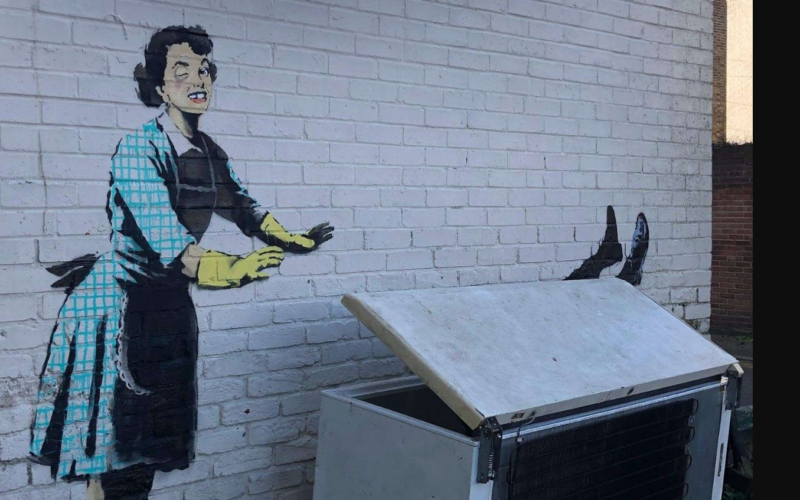London Zoo has recently made headlines with the removal of the final piece in the acclaimed Banksy animal series, a significant event marking the intersection of contemporary art and conservation. The artwork, a stencil of a gorilla assisting animals in a daring escape, was created by the mysterious street artist Banksy and had become an integral part of the zoo’s cultural landscape. However, the decision to replace the original piece with a reproduction was driven by the need to preserve this “significant moment” in the zoo’s history while ensuring the artwork’s long-term survival.
Banksy’s stencil, which depicted a gorilla opening a cage to release other animals, was one of the last in his series focusing on animals and their interactions with human-created environments. The artwork was initially unveiled at London Zoo in [Year], where it quickly became a beloved, albeit unofficial, part of the zoo’s attraction. The image captured the imagination of visitors, who saw in it a powerful commentary on the themes of freedom, captivity, and the human-animal relationship.
The piece was particularly resonant given its setting within the zoo, a space inherently tied to the complexities of animal conservation and captivity. The artwork sparked conversations about the role of zoos, the ethics of keeping animals in enclosures, and the broader environmental implications of human activities. For many, the stencil transcended its medium, becoming a poignant symbol of the ongoing debate about animal rights and conservation.
After years of exposure to the elements and the inevitable wear and tear, the decision was made to remove the original Banksy piece to preserve it. London Zoo officials emphasized that the artwork had reached a point where further exposure could lead to irreversible damage. Given the significance of the piece—not just as a work of art, but as a cultural artifact—the zoo determined that preservation was paramount.
To maintain the presence of the artwork within the zoo, a high-quality reproduction has been installed in its place. This move allows visitors to continue experiencing the piece while ensuring that the original is protected for future generations. The decision to replace the original with a replica was not taken lightly, as it reflects both the zoo’s respect for Banksy’s work and its commitment to preserving its historical and cultural heritage.
Banksy is widely known for his provocative, politically charged art that often challenges societal norms and questions authority. His animal series, which includes the gorilla stencil at London Zoo, is a prime example of his ability to blend humor with poignant social commentary. Throughout his career, Banksy has used animals as a recurring motif to explore themes of exploitation, freedom, and the consequences of human actions on the natural world.
The gorilla artwork at London Zoo is particularly emblematic of Banksy’s style. The image of a gorilla, often seen as a powerful and intelligent creature, opening the cage of other animals can be interpreted in various ways. Some see it as a critique of the conditions in which animals are kept in captivity, while others view it as a broader metaphor for the desire for freedom and the breaking of societal constraints. The artwork’s simplicity, combined with its deep symbolic resonance, is characteristic of Banksy’s ability to communicate complex ideas through accessible, street-level art.
The removal of the Banksy artwork has elicited mixed reactions from the public and art enthusiasts alike. Many appreciate the zoo’s efforts to preserve the piece, recognizing the importance of protecting cultural and artistic heritage. The decision to replace the original with a reproduction is seen by some as a necessary compromise to ensure that future visitors can continue to engage with the artwork.








